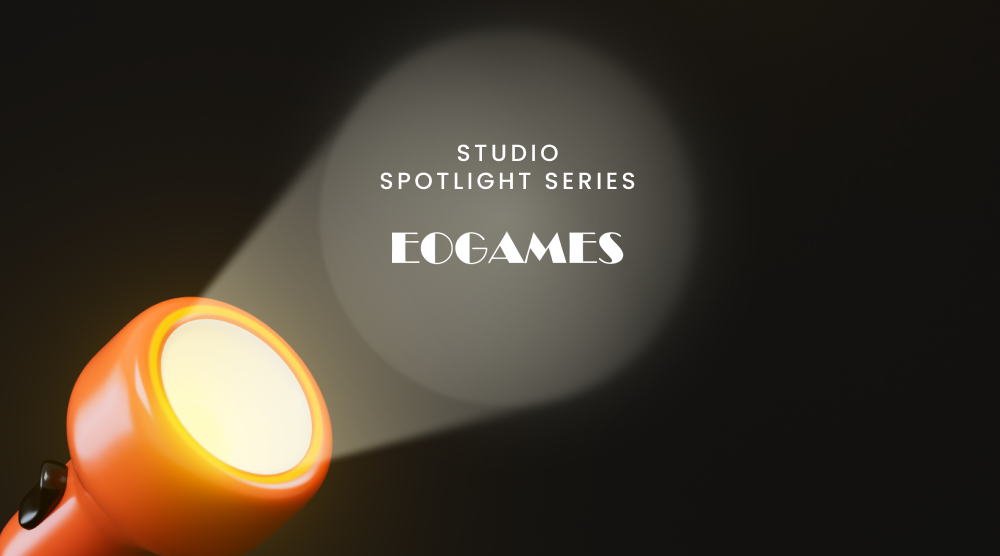A player’s first impression of your game isn’t just important - it’s everything. A great first time user experience (FTUE) is the ultimate make-or-break moment that can mean the difference between a one-time download and long-term engagement.
FTUE sets the stage for how players understand your core mechanics, enjoy gameplay, and decide whether they want to come back for more. Nail it, and you’re on the path to building a connection with your players. Miss the mark, and even the best games could fall flat before they get a chance to shine.
Here are 7 ways to optimize your hybrid with an FTUE that pulls players in, gets them hooked, and keeps them coming back to play your game.
1. Map it out
When designing your FTUE, start by mapping out everything you want to teach players. Make a list of the key elements players will need in order to master your game and have fun while doing it. And while you’re at it, be sure to keep your list simple and focused. If onboarding becomes too complicated or even overly vague, you risk churn.
FTUE is as much about player psychology as it is about the mechanics, so think about what emotions you want to spark during the experience. Do you want your players to get excited with quick wins, or are built-in challenges and small failures key?
2. Bring on the fun with the first tap
Now that you’ve got a clear path forward with your list, it’s time to move on to the fun. Don’t make players wait. Make sure the fun starts flowing in your FTUE right up front. Instead of diving head first into a ton of rules and explanations, showcase your game’s core mechanic as fast as possible so players can jump in, experiment, and decide if it’s the right game for them.
Celebration is key to keeping players engaged, and offering rewards during these moments delivers a dopamine rush. The quicker they experience the fun of rewards, the more likely they’ll be to stick around.
In Trash Tycoon, the Supersonic team turned the simple act of unlocking a dumpyard into a fun and rewarding moment. They added clear instructions, exciting rewards, and confetti to teach the mission structure while making every tap feel satisfying.

3. Add a narrative
When players connect with a narrative, they connect with the game. So think about how you can weave a story into your tutorial, not only to help players understand your core mechanics but also to make them feel emotionally invested.
Even games with straightforward, easy-to-understand gameplay like a puzzle game can benefit from a little context. Giving players a simple story or purpose to their actions, makes the experience more immersive. People are naturally drawn to stories, so tap into it to offer players a way to connect to your game.
Introducing relatable characters can also spark a connection and draw players even deeper into your gameplay. For example, a character saying, “Help me rebuild my house—it got destroyed!” is infinitely more engaging than giving plain instructions like, "Tap here to fix this house." Whether it’s a Match 3 game with a candy factory hustle or a hero saving the day, a narrative adds emotional stakes and keeps players thinking about what’s next.
In Trash Tycoon, developers worked with the Supersonic team to craft an engaging storyline that hooks players and keeps them emotionally vested. Here’s an example of how they did it:

4. Roll out new game mechanics gradually
When introducing new mechanics in your FTUE, keep things simple and roll them out gradually to avoid overwhelming players. Unlike hardcore games with longer FTUE sessions, hybrid-casual tutorials should be simple and easy to follow. The key is to break mechanics into bite-sized steps that hook players without making them feel like they’re inundated with instructions.
The same goes for UI - introduce elements gradually. Don’t overwhelm players with lots of buttons up front. Instead, add them as new mechanics are introduced. Make navigation intuitive with visual cues like tap fingers or arrows to guide players. Above all, always keep the goal clear. If players get confused or lose their path, they’re likely to churn fast.
In Trash Tycoon, jumping too quickly between mechanics overwhelmed players, with 60% churning during the tutorial.* To combat this, the Supersonic team prioritized introducing new elements gradually. As a result, players now start off their FTUE by mastering the trash cycle loop, getting to play with trucks, dumpyards, and incinerators, and only move on to the next loop once they mastered this initial game loop. Every major level unlock now comes with its own focused tutorial, ensuring players aren’t overloaded and can fully understand each mechanic as they progress. New tutorials show players that they have a new UI element where they’ll need to adjust the bar.
5. Balance difficulty and progression
Find the sweet spot between keeping your FTUE challenging enough to engage players and not too challenging so you don’t overwhelm them. Early levels should feel fun and achievable, giving players satisfying wins while slowly adding mild friction to keep things interesting. Tease what’s next by introducing upgrades, features that can be unlocked, or tougher challenges to build anticipation. During this first session, players should focus mainly on gameplay. Introducing ads can wait until they’re hooked.
While key FTUE guidelines apply across genres, the way you scale these techniques depends on the complexity of your game. For example, some of the more complex hybrid genres will need more time to introduce layers like the core mechanic, multiplayer elements, and reward systems. On the other hand, more simple, straight-forward hybrid-casual games with one-tap mechanics benefit from shorter, faster tutorials to match their straightforward gameplay.
In Trash Tycoon, the Supersonic team found that an initial sequence in the game’s FTUE where players had up to 1 minute to engage with the game without instructions provided too much freedom early on and led to confusion and churn, as players didn’t understand the goals.* The team is now in the process of making the tutorial more linear with clear goals and instructions, with the aim of improving overall retention.
6. Make data-informed decisions
Data is the foundation of a strong FTUE, providing insights into player behavior at every click and step. It identifies weak points, helps optimize events, and boosts retention. Look for data that pinpoints tutorial completion rate drop-off points, how quickly players engage in the game’s mechanics, and what percentage of players return after their first session to help you optimize your FTUE.
It’s important to note that offering the same tutorial experience to all players makes data analysis easier and more accurate. In short, the tutorial isn’t the time to segment your users.
A/B testing takes FTUE optimization further, helping you see what keeps players engaged and what’s causing them to churn. Testing and then tweaking small details like removing just 1 step or shortening the tutorial by just 1 click can have a big impact on player retention.
7. Reward but don’t overwhelm
Keep your in-game economy balanced during FTUE by introducing enough to reward players and keep things exciting, but not going overboard by offering too much currency. It’s also important to strategically roll out currencies and rewards, gradually introducing them in a clear way in order to ensure confident, engaged players.
Players should feel rewarded, not overwhelmed. The goal is to keep progression gratifying while naturally encouraging players to spend. Creating moments where players run low on currency can motivate them to keep playing or make a purchase, all while keeping the progression fun.
You also want to make sure players understand the value of each currency. Over-saturating the tutorial with currencies can cheapen their worth and reduce the possibility for in-game purchases. This is exactly where partnering with your economy team and game designers can help solidify the best strategy.
When it comes down to it, a strong FTUE isn’t just a nice-to-have—it’s a must for boosting engagement and driving long-term retention. It’s your first chance to make the best impression, engaging players early, keeping them emotionally invested, and setting the tone for the rest of their gameplay experience.
*Data obtained from Supersonic business intelligence
Let's put these tips to good use
Publish your game with Supersonic



